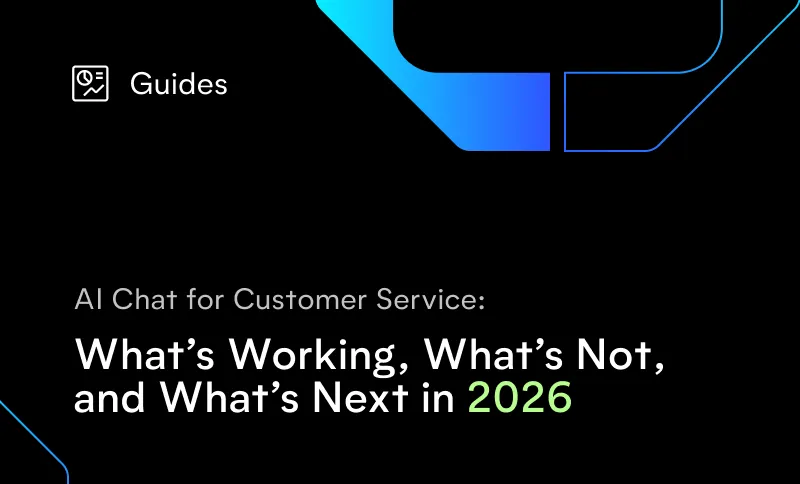
Average handle time (AHT) has long been a go-to metric in contact centers. It’s easy to calculate, simple to benchmark, and endlessly trackable. But in a customer experience world that values empathy, resolution, and long-term loyalty, AHT is showing its age.
If you're still using AHT as your north star, you're likely missing the bigger picture. This post explores why optimizing for speed alone can backfire, and what smarter, outcome-based metrics modern contact centers are using instead.
The problem with making AHT the hero
AHT rewards one thing: speed. And while speed matters, it doesn't always correlate with customer satisfaction, agent effectiveness, or call resolution.
When agents are pressured to keep calls short, they may:
- Rush customers off the phone before fully resolving the issue
- Skip steps or fail to explain processes clearly
- Avoid asking clarifying questions to keep the clock down
The result? Calls that seem efficient on paper but lead to:
- Repeat contacts for the same issue
- Lower customer satisfaction (CSAT)
- Frustrated agents who feel penalized for doing thorough work
Imagine this: a customer calls three times in one week for the same billing issue. Each call clocks in at under 2 minutes. On the surface, that seems “efficient.” But the problem was never solved, and now your CSAT and agent workload suffer.
What metrics actually drive better outcomes?
Contact center leaders are shifting their focus to metrics that reflect what really matters:
- First Call Resolution (FCR): Did we solve the issue on the first try?
- Customer Satisfaction (CSAT): How did the customer feel about the interaction?
- Containment rate: For automated systems, how often are issues resolved without escalation?
- Escalation quality: Not just how often something escalates, but whether the escalation is justified and well-handled.
- Conversation quality: Use tools like Conversation Intelligence to evaluate tone, empathy, and completeness across every interaction, not just a small QA sample.
These metrics push teams to focus on how well they’re solving problems, not just how fast.
When we analyzed what top-performing agents do differently, none of their tactics had anything to do with speed. The most effective agents were more likely to pause, clarify, personalize the experience, and stay on the line until resolution. You can read the full breakdown in our post on top customer service agent tactics.
How AI transforms average handle time measurement
One of the benefits of AI in the contact center is that it resets the equation. AI agents don’t rush. They don’t skip steps. And they don’t have bad days. More importantly, they:
- Follow the complete resolution path every time
- Know when to escalate and do it cleanly, with full context
- Deliver consistent performance across time of day, call volume, and mood
AI also unlocks new measurement possibilities:
- Full-call QA: Instead of sampling 2% of calls, you can assess 100% for resolution quality and compliance
- Pattern detection: Spot systemic friction points that affect customer journeys and shift to a proactive stance on addressing them
- Tone and sentiment: Identify where tone drops or empathy wanes, factors that AHT can’t reveal
Shifting from handle time to resolution quality
Speed isn’t going away as a priority, but it needs to be balanced with outcomes. Whether it’s a human agent or an AI one, what matters is:
- Was the customer’s issue fully resolved?
- Was it handled with care, clarity, and empathy?
- Did the customer feel heard?
- Did they need to call back?
“Pauses were one of the most consistent traits across high-performing calls. The top 25% of agents paused more frequently, especially before responding or after delivering key information.” — Insight from 5,000 real customer calls
A 90-second call that leads to a re-contact is more costly than a 3-minute call that ends the issue for good.
That’s why leading contact centers are starting to track time-to-resolution instead of just handle time. It gives a more holistic picture of success, both operationally and experientially.
Final thoughts on AHT as a KPI
AHT is a useful operational metric, but it’s not a measure of quality, resolution, or customer trust. If it’s the only number you’re watching, you’re likely missing what matters most.
As AI becomes more central to the contact center, it’s giving teams new ways to track, understand, and improve performance. And it’s helping leaders reframe success around outcomes, not just averages.
Want to see what resolution-first automation looks like in action?
Hear the difference by trying the AI Agent Showcase or, book a demo to explore use cases tailored to your contact center.



.svg)


